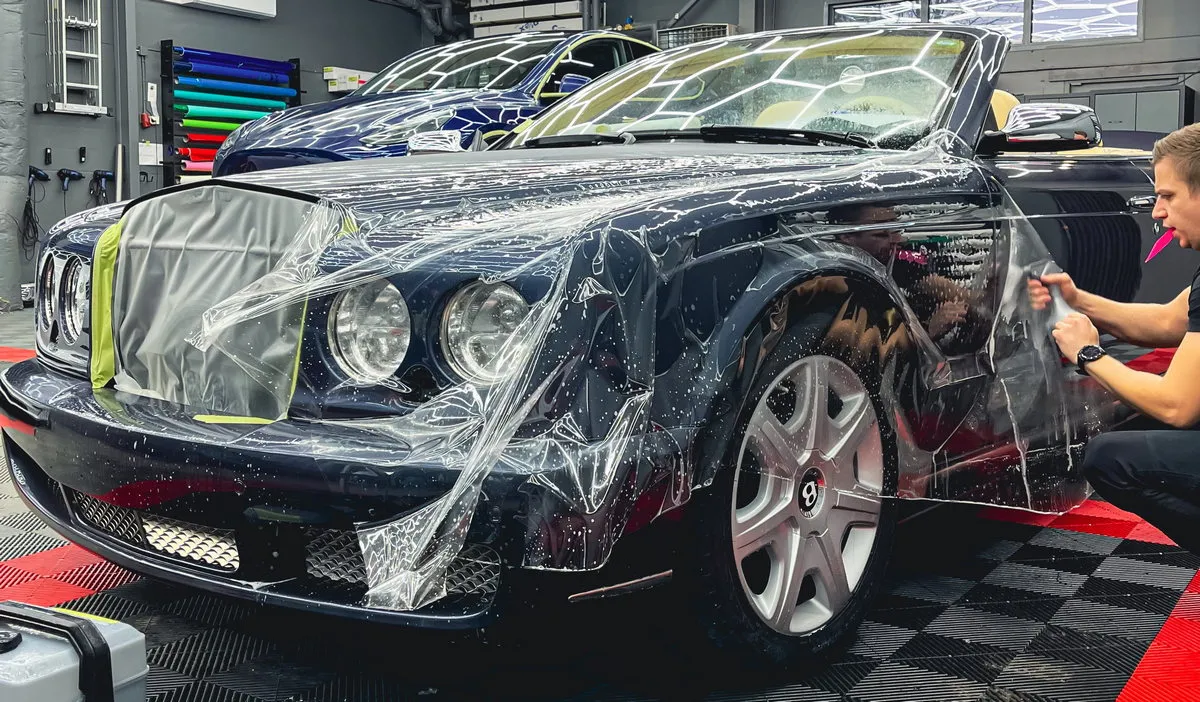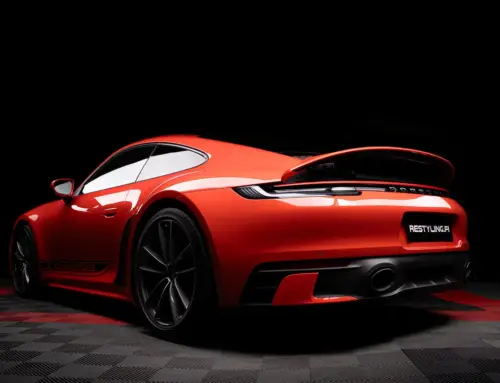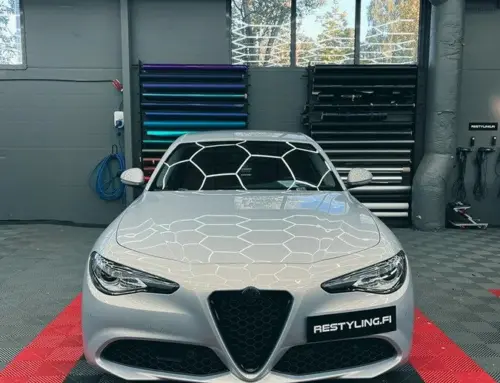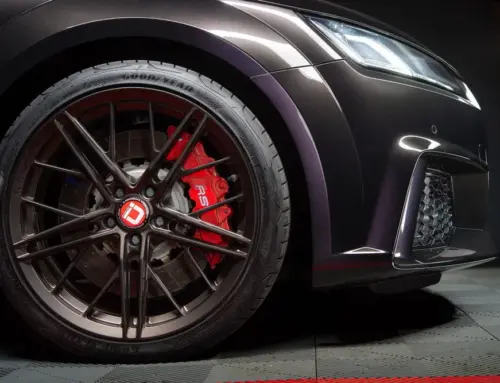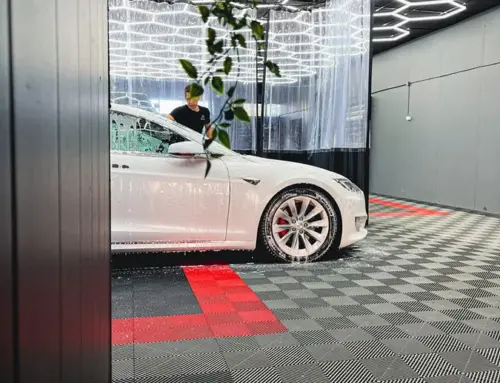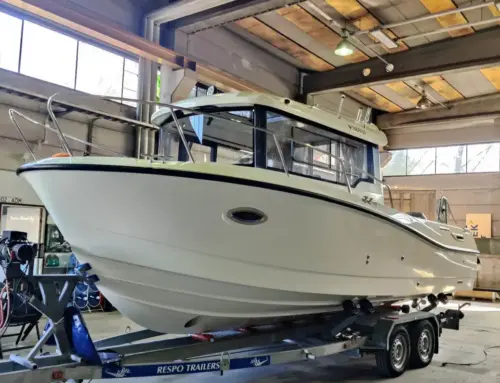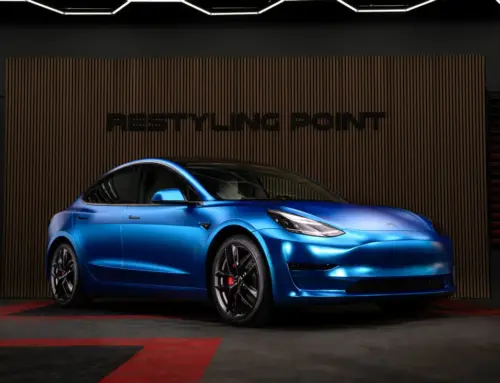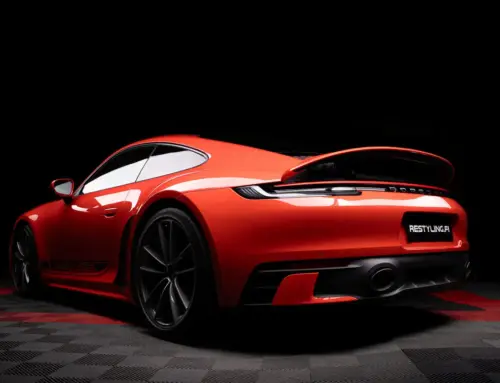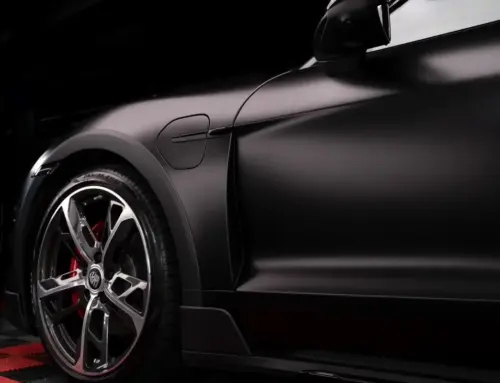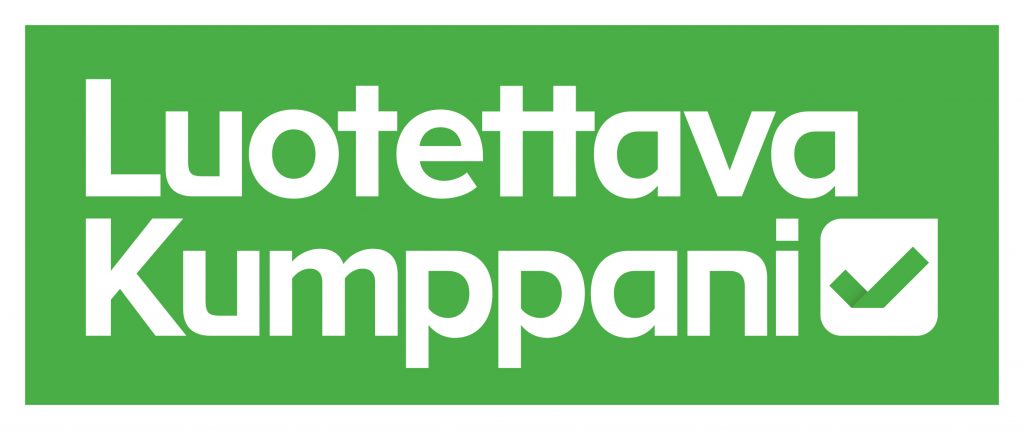When buying milk, you know roughly how much one liter costs, what color the liquid in the can is, and what it tastes like. But when buying PPF (Paint Protection Film) for your car’s front-end, do you actually know what the price is based on and by what criteria a quality film installation is determined?
While milk has been on the market for hundreds of years, PPF film was only invented about a decade ago in its current technical specifications. In this article, we will go through the installation methods of PPF film so that car owners can avoid unnecessary mistakes and understand how the quality of installations can be assessed.
- What is PPF Paint Protection Film?
- Installation Methods
- Installation Standards
- Five Customer Experiences
- General Tips Before PPF Paint Protection Film Installation
What is PPF Paint Protection Film?
PPF or Paint Protection Film is the only protective solution in the world that protects the car’s paint surface from physical and chemical damage. It is a transparent polyurethane film installed with liquid. The technique is the opposite of traditional surface taping, where the installation is done dry. PPF is the world’s best protection against stone chips and studs. It keeps the paint surface new for decades.
Taping is a hundred percent handcraft, which means that the skill and precision of the installer are crucial for the success of the installation. While a robot can repeat with micron precision, a human may not necessarily do so. Generally, PPF film installation is one of the most challenging taping methods because the film material simply cannot withstand the stretches and manipulations that traditional vinyl tape can.
So the most important thing in taping is to understand the material down to the molecular level and know how it behaves in different situations and temperatures. The installer’s task is to manipulate the material gently and guide it to the desired shape and location, which requires love, innovation, and professional pride.
PPF Paint Protection Film Installation Methods: PreCut and Bulk
PPF films are installed worldwide using two different methods: PreCut and Bulk.
PreCut: In this method, the installer selects the car’s model from the licensing program database and directs the plotter cutter to precut a pre-designed piece of film for the desired part of the body. Some benefits for the customer in this method include:
- Cost-effectiveness (minimizing material waste + speeding up installation)
- Minimization of knife usage during installation
- Improvement in the overall quality of installation
Bulk: In this method, the installer takes a piece of film from the roll and installs it on the part of the body. Then, excess film is trimmed off with a knife. The advantage of this method is that there are fewer seams in the installed part of the body.
Each installer has their own style, and experienced professionals can visually assess how, with what material, and where the installation was done. From the customer’s perspective, it is important that regardless of the method used, certain quality criteria are always followed in the installation process.
PPF Paint Protection Film Installation Standards
There are no official standards defined for the installation of PPF paint protection film. Quality criteria have emerged more from the experience of passionate, dedicated professionals and are continuously evolving. Therefore, the difference between subjective opinion and the quality standard created by professionals will always be a topic of discussion.
However, one thing is clear: the customer’s car must not be damaged.
Do you know how to cut plasterboard? It is not cut through with a knife but only scored on the surface and then snapped. Similarly, PPF film should not be cut through to the paint surface but only scored on the surface. A professional installer can apply a piece of PPF film onto the paint and cut it without damaging the paint.
The film installation must last for years, preferably even decades. The method of PPF film installation directly affects the film’s durability and how susceptible the car is to stone chips. For example, unfolded edges at the front are always a risk for stone chips or exposure to the strong pressure of a pressure washer.
Sometimes, a stone chip may leave a mark, for example, on the front fender, just because the film was not taken far enough.
The installation must be clean and as inconspicuous as possible. There should be as few seams as possible, and they should be aesthetically pleasing, meaning straight and without large gaps between the boundaries of the tapes. There should be minimal, preferably no debris under the film: ideally, not even a speck of dust. All parts that are removed during installation must be replaced so that they are also durable. There should be as few stretch marks as possible, or preferably none at all. As the name suggests, the transparent film must be inconspicuous.
The material used should be suitable for Finnish conditions and adaptable to the color and shapes of the car.
Five Customer Experiences
Sometimes, inadequate installation of PPF paint protection film doesn’t go as planned. The following customer experiences are real-life examples. The monetary losses do not account for the value of customers’ lost time and nerves.
1. A customer had the entire car protected with PPF on a car worth over €140,000. The installation was done in a way that the film didn’t adhere properly in many places, and it was later discovered that the entire car had been cut to the primer. The cost of repainting was €7,200, and the customer had to be without their car for two months. The car was re-protected with PPF by another installer correctly the second time.
2. A customer had the front end and side skirts of their €70,000 car protected with PPF. After the first installation didn’t go well, the customer gave the shop another chance to redo the job. Even after the second attempt, the installation didn’t meet the criteria of durability and the customer found cuts on every part of the car where film was installed. The films were removed, and the car was sent to a paint shop, where it was re-protected with PPF for the third time, this time by a different company, and done correctly. The customer incurred approximately 3-4 weeks’ worth of rental car expenses during this time, at their own expense. Finally, cuts were still found on the headlights, which the customer had to accept.
3. A customer had their €150,000 car repainted due to stone chips on the entire front end and then had the entire car protected with PPF. After installation errors, it was revealed that 90% of the car’s parts had knife cuts. The films were removed, and along with them, the fresh paint, as the film had been installed two weeks after painting. The car then went through a complete repainting process, costing €9,000. Six weeks later, PPF was installed on the entire car correctly by another company.
4. A customer had PPF installed on the front end, skirts, and inner sills of their new €60,000 car. It was quickly noticed that the film had been installed completely inadequately, and in many places, there was no film at all. The car also revealed slight knife marks. The customer complained, and the PPF film was installed correctly by another company, this time done right. The customer had to be without their car for a week and a half, and the knife cuts remained on the car.
5. A customer had PPF installed on their car’s front end and immediately complained the next day after noticing the inadequate installation. After the complaint, the customer received a somewhat blunt response and had to pay for the front end paint job and new headlights themselves because they had been damaged to the point of being inoperable. The customer incurred €5,700 in expenses. After this, they took the car to another place for PPF installation, where the issue was resolved correctly. The customer had to be without their car for three weeks.
General Tips Before Installing PPF Paint Protection Film
After the previous examples, it can only be stated that it is our responsibility as installers whether our industry evolves or not. If even one dissatisfied customer is disappointed, they will never return, and in the worst case, they may spread the word that paint protection film is not a durable or safe solution. In this way, the industry loses customers.
To save cars, customers’ nerves, and the reputation of the industry, we must be able to offer nothing but flawless customer experiences. PPF installation, when done with skill, is a wonderfully effective protection solution that safeguards a car’s paint better than any other materials or chemicals.
Here are a few important tips for car owners who are considering having PPF film installed:
- In Finland, there are many reputable installers. When looking for a paint protection company for your car, check the reviews on Google and Facebook. These reviews cannot be edited or removed by companies, so they are usually truthful, excluding intentionally fictitious reviews. If you notice that the majority of the reviews for a company are positive with a few odd 1-star reviews, inquire about them from the company. The truth may be different from what the review states.
- Ask the company that installs PPF films about their general practices, materials used, warranty conditions, installation techniques, employees’ experience, and references.
- If the price is significantly lower compared to others, consider why. PPF film is the most expensive installation material among all tapes and may cost €150+/m. For the front end of a car to be covered, 4 – 8 meters of PPF film is usually required. Therefore, the material costs alone are €600 + €1200.
- If your car has been inadequately protected with film and you complain about it, according to the Consumer Protection Agency’s guidelines, you must give the company that initially did the work another chance to redo it. Otherwise, you may end up being the one to pay if you cannot resolve the issue directly with the company.
- Do not hesitate to seek a second opinion or assistance from another professional.
Interested in PPF paint protection for your car? Or are you dissatisfied with work done by another provider? Contact [email protected] to schedule a free consultation. We’re here to help!
Want the job done responsibly, on schedule, and with the best value for your money?
Ask for a quote from Restyling Point’s professionals, who do this with quality standards, values, and love.
On WhatsApp: +358445050624
Phone: +358445050624
By Email: [email protected]
Restyling Point Oy – The leader in wrapping and protection treatments in the Nordic countries


